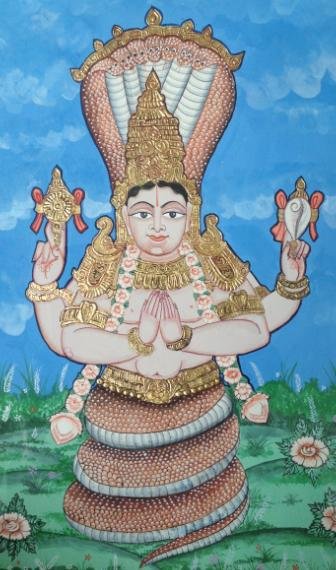The Work of the Yoga Sutras: A Dirgha Kala (a long time)
Happy Labor Day and unofficial start to fall, Galaxy Friends! I read my favorite poem by Philip Levine in class this morning, like I do every time I have the chance to teach on Labor Day. I’ll share it at the end of this dispatch. Iit’s about different meanings of work - laboring on an auto line (Levine hails from Detroit, like me), laboring at something you love that you don’t make money at, and the labor of expressing love for another person who is important to you. They’re all forms of work, and equally noble.
September and its back to school vibe always strike me as a good time to dig into one of yoga’s foundational texts - the Yoga Sutras. The Sutras are short, sharp little wisdom nuggets, meant to be chanted (and maybe even memorized!), and then unpacked through philosophical discourse. They’re written by Patanajali, who may or may not have existed, and are always accompanied by exposition - the first exposition being one by Vyasa, who may be the actual author Sutras, as well.. The Sutras were a bit of an obscure text until they were introduced to the West by Vivekananda at the Parliament of World Religions that happened in conjunction with the Columbian Exposition in Chicago in 1893. The Sutras are an earlier text in the yogic tradition, and assemble bits and pieces of several different branches of Indian thought and religion - there are aspects of Buddhism, Samkhya, and early yogic philosophy in there, in a way that sometimes seems a little hard to parse out.
While there are probably more relevant or noteworthy yogic texts, and the heightened importance and focus on the Yoga Sutras amongst Western practitioners is a little bit of an oddball choice that basically can be credited to one Hindu monk’s preference, I still continue to highlight them and focus on them, particularly in my Yoga Teacher Training programs. Why? First of all, because they give a systematic explanation of the eight limbs of yoga that I feel is a necessary companion to the physical practice of yoga asanas. And also? Because it’s important to me that my studio is not only a space of physical practice, but a space of learning about yoga in as full a way as I can possibly transmit.
And that commitment to learning is one that I’ve felt strongly about lately. Sometimes it can be hard to ask folks to slow down, talk about philosophy for a few minutes at the start of a practice. Why do we think we “should” get really sweaty when we practice? Why are so many modern yoga classes taught at such breakneck speeds? Why do so many yoga studios purposely leave out the philosophical and meditative aspects of the practice?
It brings me back around to my musings around Labor Day, and how we categorize work. I think many of us prioritize working hard at the expense of working deeply or working consistently. Because it’s easy to quantify hard work: we might be sore the next day, or we might be really sweaty at the end of practice. But deep work might ask us to actually slow down, break something down, be vulnerable while we learn the intricacies of a pose, and maybe not receive that gold star of “hard work” that we’re used to measuring our yoga practice by. Our progress might not be very linear (the best kinds of progress veer WAAAY off the linear path, if you ask me).
And how do you get “good” at aspects of the Yoga Sutras like the Yamas and the Niyamas, the ethical precepts of a yoga? How do you get “good” at the only reference to asana in the entire four books of the Yoga Sutras? “The practice should be steady and comfortable.” In fact, the entire third book of the Yoga Sutras details the “siddhis” or yogic powers that a yogi can access when they activate something called Samyama, and then goes on to warn that accessing these powers are actually an impediment on the quest for Samadhi, or bliss. So is getting “good” at yoga actually even something we want? I’m not sure I know the answer to that.
So back to Philip Levine. In his poem, he says to the reader, several times, that “you don’t know what work is.” And it turns out that he’s talking to himself, as well as the reader . So what is work? And what is yoga? I think, in both instances, they exist as the best manifestations of their broad definitions. Work can be something that asks us to dig deep, sit in uncomfortable places, and hold differing truths in our hearts and minds at the same time, without rushing to tie things up into neat little conclusions or definitions. And yoga can be that, too. It doesn’t get accomplished at the end of a 60-minute practice, it’s not just a whole body practice. It’s a whole life practice that asks you to live it in every aspect you possibly can, for as long as you can. It’s kind of an impossible task, but it’s also a worthy one. So let’s dive into the work of exploring the Sutras together, because we may not know what work is all of the time, but I think we can all agree that this work of yoga is something we’re committed to for, as the Sutras say, a “dirgha kala” - a long time. Let’s do the lifelong work of yoga together, Galaxy Friends, and keep learning.
And now, some Philip Levine brilliance for you. Makes me cry every time I read it. Do yourself a favor and listen to him read it in that quintessential Michigan accent that is slowly going away.
“What Work Is”
Philip Levine
We stand in the rain in a long line
waiting at Ford Highland Park. For work.
You know what work is—if you’re
old enough to read this you know what
work is, although you may not do it.
Forget you. This is about waiting,
shifting from one foot to another.
Feeling the light rain falling like mist
into your hair, blurring your vision
until you think you see your own brother
ahead of you, maybe ten places.
You rub your glasses with your fingers,
and of course it’s someone else’s brother,
narrower across the shoulders than
yours but with the same sad slouch, the grin
that does not hide the stubbornness,
the sad refusal to give in to
rain, to the hours of wasted waiting,
to the knowledge that somewhere ahead
a man is waiting who will say, “No,
we’re not hiring today,” for any
reason he wants. You love your brother,
now suddenly you can hardly stand
the love flooding you for your brother,
who’s not beside you or behind or
ahead because he’s home trying to
sleep off a miserable night shift
at Cadillac so he can get up
before noon to study his German.
Works eight hours a night so he can sing
Wagner, the opera you hate most,
the worst music ever invented.
How long has it been since you told him
you loved him, held his wide shoulders,
opened your eyes wide and said those words,
and maybe kissed his cheek? You’ve never
done something so simple, so obvious,
not because you’re too young or too dumb,
not because you’re jealous or even mean
or incapable of crying in
the presence of another man, no,
just because you don’t know what work is.
Pardon me, my eyes are a little leaky,
Anna
What I’m Reading
It’s predictable, but still worthwhile: here’s my go-to translation of the Yoga Sutras. It’s not the most scholarly of translations, but this commentary on the Yoga Sutras by Sri Swami Satchidananda is taken from his informal dharma talks at the Satchidananda Yogaville Ashram in Virginia. It’s an accessible and modern take on the sutras that is a great starting point - for a first dip into this philosophical text, or a jumping off point for a discussion with some of your yoga buddies (we call them Sutra Chats in our 200 and 300-hour Teacher Trainings here at the Galaxy). From here, there are lots of other translations to dive into, and my second favorite translation is a deep cut by Bouanchoud, which seems to be out of print (but I might loan it to you if you’re interested.



